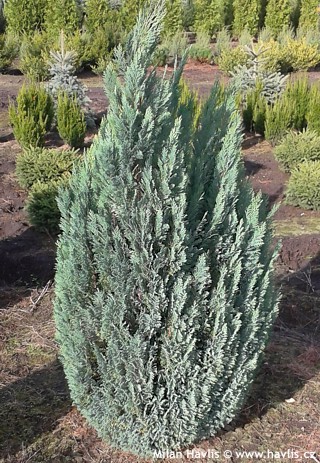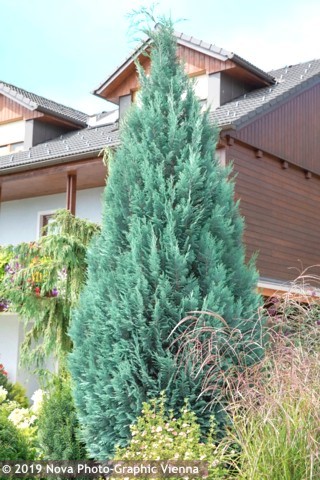Chamaecyparis lawsoniana ('Columnaris Glauca') 'COLUMNARIS' Lawson cypress
Chamaecyparis
Lawson cypress is native to northwestern America, from Oregon to northern California. It was first discovered by European Americans near Port Orford, Oregon, and was introduced to horticultural market in 1854. It was described by the Scottish botanist Andrew Murray (1812-1878) and named after another Scottish botanist and merchant, Charles Lawson (1795-1873), who became famous by importing new plant species from America to Britain. This cypress tree was one of his discoveries. It is a hardy, evergreen conifer with soft, scale-like needles. Perhaps all over the world in temperate climates, it is widely planted in gardens and parks and is popular for its variability. There are many colourful varieties that brighten up compositions of dark green shrubs and trees and perform also in decorative outdoor containers.
Columnaris is a hugely popular variety of Lawson cypress with blue needles and compact habit. It does not grow wider than 1m which makes it ideal for hedges that are only trimmed at the top. Mature plants can reach 6-8m in many decades, they are usually kept smaller by regular trimming that is best done in April. Medium growth rate. It prefers moist, slightly acidic soil but is adaptable to almost all types of soil. Fully hardy to -28°C (USDA zone 5).
Last update 10-01-2008

































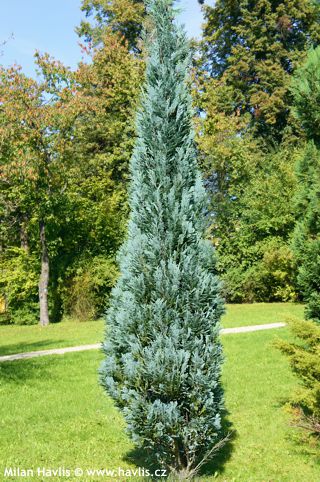
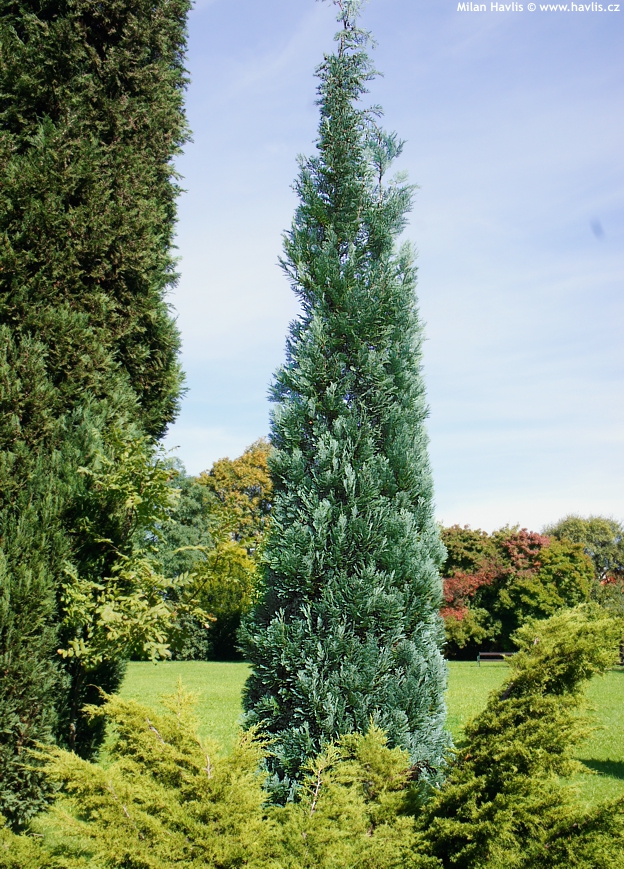
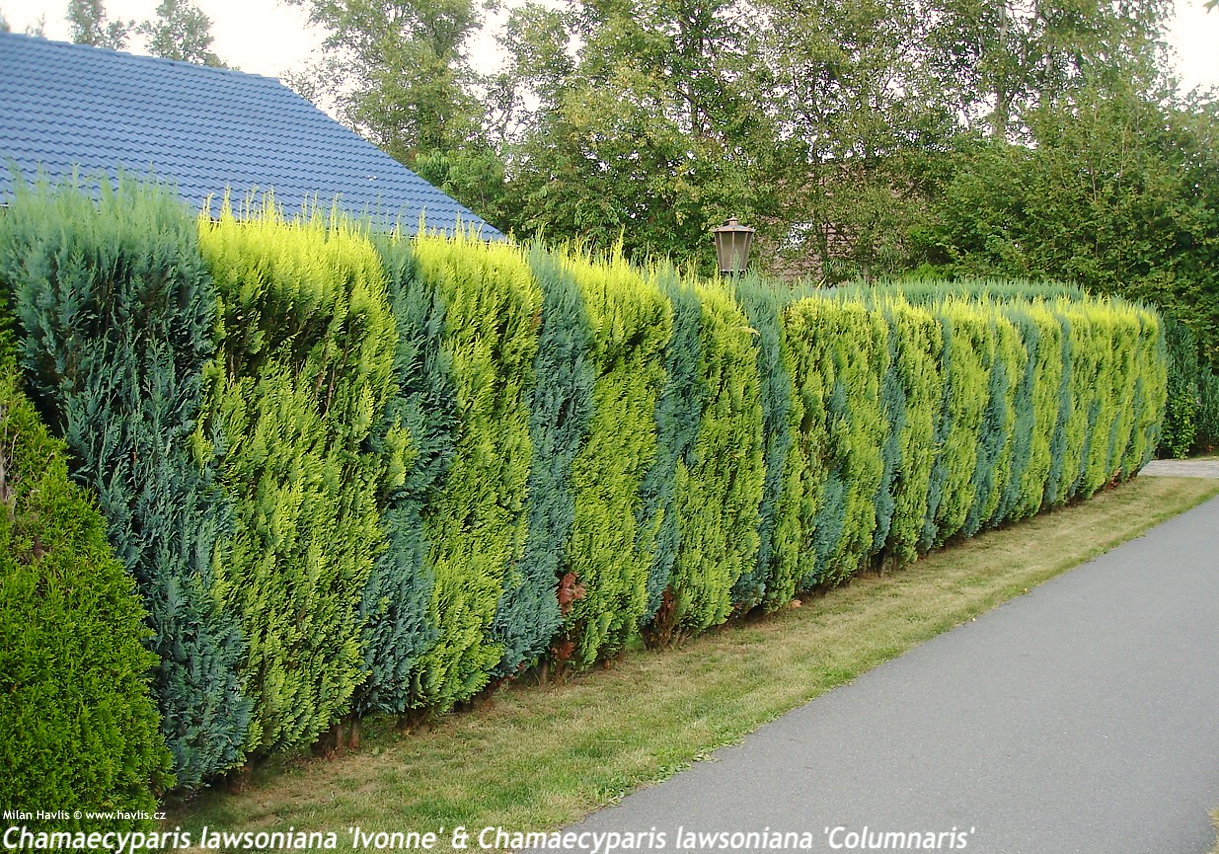
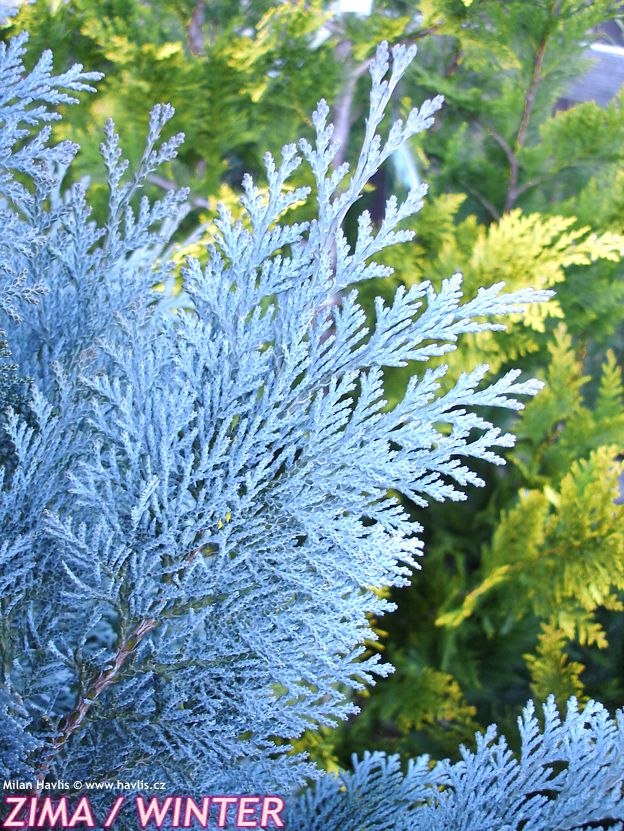


.jpg)
